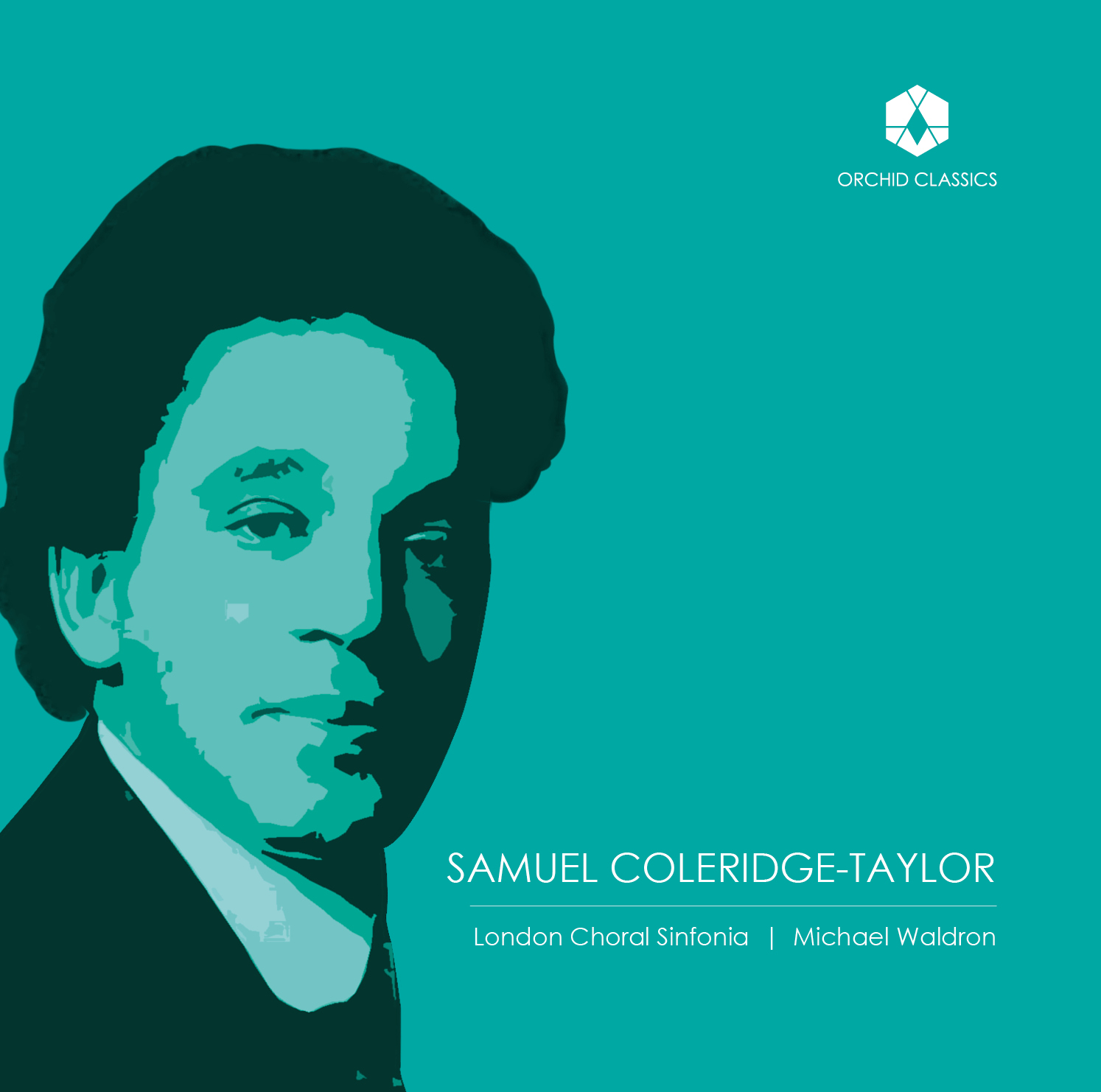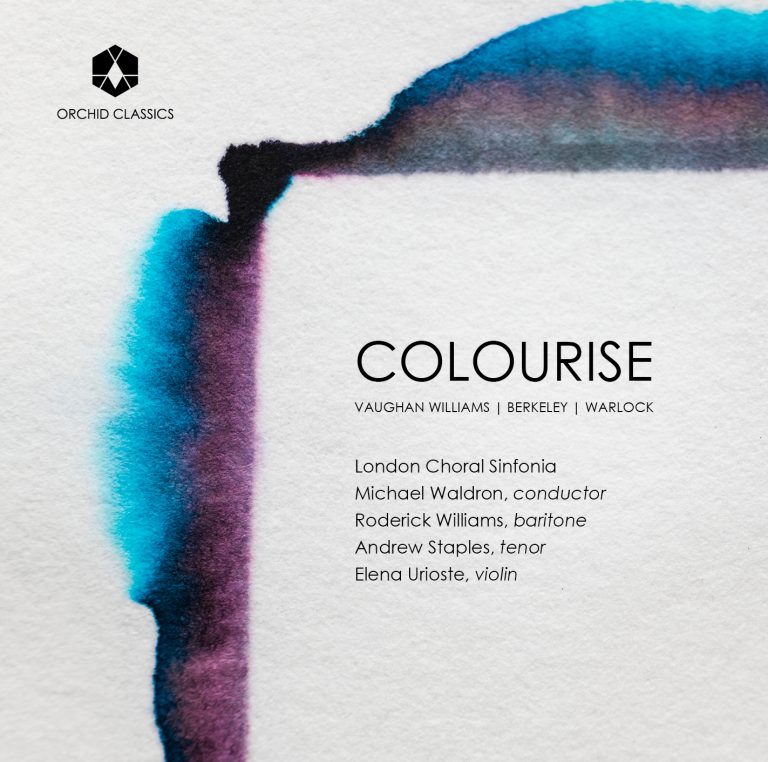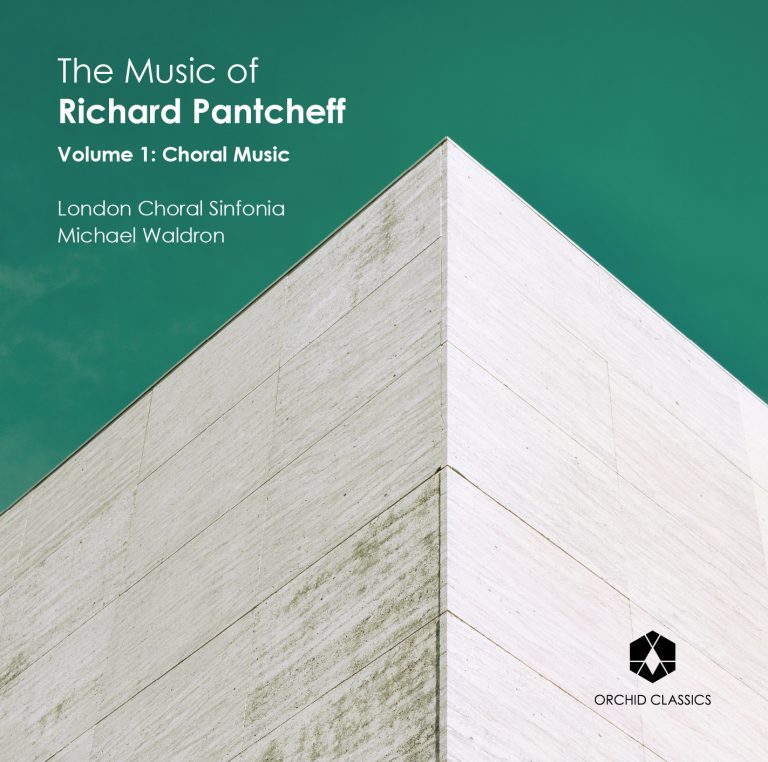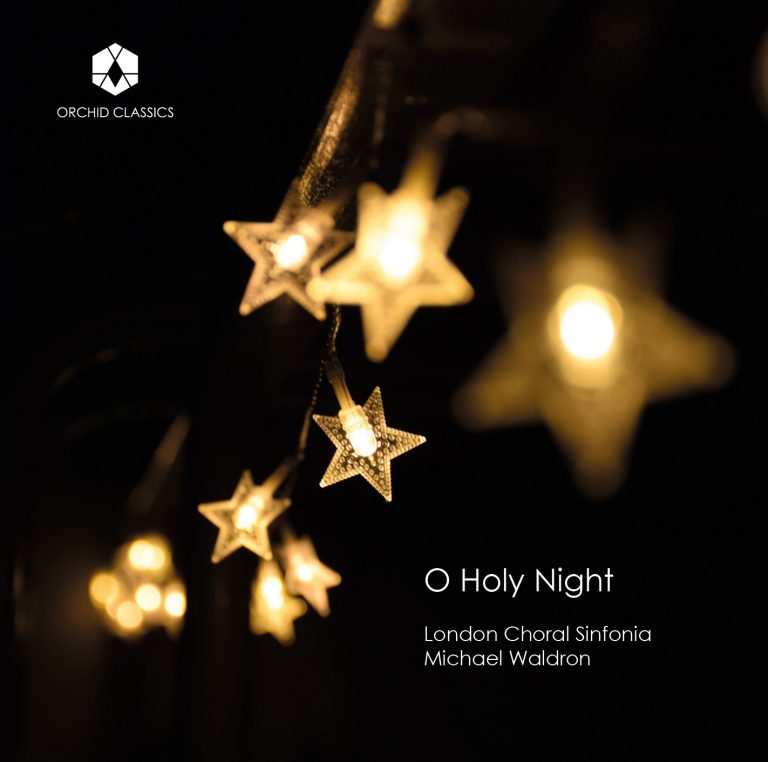Artist Led, Creatively Driven

Choral music by Samuel Coleridge-Taylor
London Choral Sinfonia
Michael Waldron, conductor
James Orford, organ
Release Date: June 16th
ORC100247
SAMUEL COLERIDGE-TAYLOR (1875-1912)
DISC 1 – SACRED
1. Te Deum Laudamus
2. The Lord is my strength
3. In thee, O Lord
4. Jubilate Deo
5. O ye that love the Lord
6. Benedictus
7. By the waters of Babylon
8. Arietta (3 Short Pieces for Organ)
9. Lift up your heads
10. Magnificat
11. Nunc Dimittis
12. Now late on the Sabbath Day
Alison Ponsford-Hill, soprano
DISC 2 – SECULAR
1 Sea Drift
2 By the lone Sea Shore
3 Whispers of Summer
4 The Evening Star
5 Elegy (3 Short Pieces for Organ)
6 The Lee Shore
7 Song of Proserpine
8 Summer is gone
9 Melody (3 Short Pieces for Organ)
10 Viking Song
London Choral Sinfonia
Michael Waldron, conductor
James Orford, organ
The genesis of this album began quite by accident. I was recording some Vaughan Williams in October 2022 and was chatting with our producer, Adrian Peacock, in one of the breaks. We were discussing well-known composers and their neglected works, and in contrast neglected composers and their better-known works. Very quickly Samuel Coleridge-Taylor and Hiawatha’s Wedding Feast came up in conversation. I recalled having grown up with an LP recording of it at home but couldn’t call to mind being familiar with any of his other music. Adrian and I reflected on the revived interest in his music and the several recordings of his chamber, orchestral and song repertoire which had appeared in the previous 12 months.
Later that day I did a cursory search online to see what other – if any – music Coleridge-Taylor had written for choirs/chorus. Very soon it became apparent there was rather a large amount of it, and although published and easily available, almost none of it had been recorded. I hastily ordered a copy of everything I could get my hands on.
Over the coming weeks the scores began arriving. I sat down and played each one at the piano. I was blown away by the variety, skill and beauty in all of them. It was roughly a 50/50 split of secular and sacred. I was then – and still am now – shocked that all the sacred works were unfamiliar to me, particularly given how much of my early musical training was in church/cathedral music. With the support of the LCS board and the generous support of its sponsors, we all felt this was a project to push up the agenda.
At the risk of sounding cliched, it has been an honour to rediscover many of these pieces and record them, giving them a platform I feel strongly they all deserve. From the simple, understated tones of Whispers of Summer on one end of the spectrum, to the quasi-cantata grandeur of Now late on the Sabbath Day, this is music which deserves to be known, and all will enjoy.
Michael Waldron
Achieving sudden fame in 1898 at the age of 23 with his delightfully colourful cantata Hiawatha’s Wedding Feast, the Black English composer Samuel Taylor-Coleridge would thereafter remain, for the rest of his short life, one of the most admired musicians of the day — not just in the UK but elsewhere, especially in the USA.
Some of his works retained their popularity after his death, notably Scenes from The Song of Hiawatha, which added two sequels to the initial cantata: The Death of Minnehaha (1899) and Hiawatha’s Departure (1900). For many years – indeed as late as 1953 — these would be performed in sequence in a full staging by the Royal Choral Society at the Royal Albert Hall.
But musical fashions change, and slowly this remarkably talented figure, together with many of his contemporaries, slipped almost entirely from view. Happily, over recent decades, there has been a serious resurgence of interest in Coleridge-Taylor’s work, with two substantial biographies produced thus far and the diligent research of scholars such as Dr Catherine Carr continuing to make important new musical discoveries.
While Coleridge-Taylor’s output is now being performed more frequently, many of the shorter choral works heard on this disc are being recorded for the first time. Together they cover the entire creative period of a composer who was born in Holborn in central London but who spent most of his life in the Croydon area, where he died of pneumonia at his home at the age of 37.
The earliest work on this disc is the short anthem for four voices In Thee, O Lord, setting words from Psalms 81 and 31 and published by Novello in 1891, when its composer was just 16. The dedication is to Colonel Herbert A. Walters.
Twelve years older than Coleridge-Taylor and retired from his professional military life, Walters was a silk merchant, but more relevantly a governor of the Tamworth Road British School in Croydon attended by the talented young musician, as well as choirmaster of St George’s Presbyterian Church where Coleridge-Taylor became his star chorister and indeed moved with Walters when he progressed to St Mary Magdalene, Addiscombe. A lost Te Deum was also dedicated to Walters, as well as the Christmas anthem Break Forth Into Joy (1892); most importantly of all, it was he who would arrange for Coleridge-Taylor’s admission as a student to the Royal College of Music at the age of 15.
A ‘short Festival Anthem’ also published in 1892 and setting words from Psalm 24, Lift up Your Heads has been widely performed and arranged: Percy Fletcher’s version of this sturdy piece for men’s voices and piano was recorded in 1926 by the Associated Glee Clubs of America with a choir of 2500 voices!
Other short anthems from the same year are The Lord is my Strength, written for Easter, setting a text from Psalm 118 and closing with the chorale ‘O Lord of all, with us abide’ taken from Hymns Ancient and Modern (the chorale’s text is by C. J. Wilson); and the skilfully written, Mendelssohnian O Ye that Love the Lord to a text from Psalm 97.
The turning-point of Coleridge-Taylor’s career came with the first performance of his cantata Hiawatha’s Wedding Feast, which his composition teacher Charles Villiers Stanford conducted at the Royal College of Music on November 11, 1898. Its immediate and resounding success led to it being quickly taken up by choral societies in the UK and not long afterwards in other countries – especially the United States, where its composer was feted on his three visits in 1904, 1906 and 1910.
From the year of Hiawatha itself come the Three Short Pieces for Organ, the first two, Arietta and Elegy introductory voluntaries, the third a Melody. Each has its individuality: the Arietta, in particular, which includes hints of Coleridge-Taylor’s favourite composer Dvořák’s melodic and harmonic approach, proving surprisingly wide-ranging in mood.
A clear development in the composer’s style can be noted in the anthem for soloists and chorus By the Waters of Babylon, a powerfully dramatic setting of that iconic song of exile, Psalm 137, dating from 1899. Together with Hiawatha’s Wedding Feast marking the early maturity of a composer still only in his early 20s, the piece mines a definite vein of melancholy.
Composed earlier but published in 1899 are Coleridge-Taylor’s settings of the canticles for the morning (Jubilate Deo, Benedictus and Te Deum) and evening (Magnificat and Nunc Dimittis) services. Either Coleridge-Taylor or (more likely) his publisher Novello eventually decided that these were sufficiently important to be given their own opus number.
Yet correspondence between August Jaeger, the editor at Novello best known to music lovers as ‘Nimrod’ in the Enigma Variations, and Elgar himself, reveals that Coleridge-Taylor’s settings had ruffled feathers at the firm — perhaps not surprisingly, given their individual spirit.
While Novello had happily published no fewer than five of Coleridge-Taylor’s anthems in 1892, now that he ‘develops his individuality & strength’, Jaeger wrote to Elgar on September 15 1897, ‘they will take nothing of his. I have before me a Morning and Evening church service which I consider splendidly fresh, ORIGINAL & yet simple & effective & devotional which “we” won’t do because the Editor thinks it is not in the English church style’. Presumably the overwhelming success of Hiawatha in 1898 caused Novello to reconsider, for the services were published the following year.
While they show the influence of his teacher Stanford (who produced several exceptional services), they might also remind the listener of Dvořák and his muscular Te Deum: Coleridge-Taylor’s strikingly effective writing for both chorus and organ maintains a vigour and sweep that make the listener sit up straight.
The spacious Te Deum is sensitive to the drama of the text. In the Benedictus there is a characteristically intimate moment at ‘We being delivered out of the hands of our enemies’ and a highly effective suspension on the word ‘peace’. There’s a healthy swing to the Jubilate Deo. The rhythmically alive Magnificat uses the alternation of choir and organ to impressive effect while the Nunc Dimittis is suitably solemn and dignified.
Equally imaginative is the Eastertide anthem Now Late on the Sabbath Day (1901), setting a text from St Matthew in the Revised Version published 20 years earlier. From the searching chromatic harmonies of the organ introduction onwards Coleridge-Taylor demonstrates a sense of drama: there is a striking change of mood when the earthquake strikes, with the syncopated rhythms throwing the listener off balance.
Setting words by the Scottish poet Charles Mackay (1814-89), the four-part song By the Lone Seashore also dates from 1901, its bleak and dreary seascape finally given some warmth and brightness by the appearance on the horizon of a white sail, at which nature smiles in sympathy.
Continuing in a similar vein of desolate shores and personal loss, the finely achieved ‘rhapsody for eight unaccompanied voices’ Sea Drift, Op.69 (1908), like the set of Anglican services, was deemed sufficiently significant to receive its own opus number. The text has nothing to do with the Walt Whitman poem of the same title set by Delius but is rather by Whitman’s fellow-American Thomas Bailey Aldrich (1836-1907). It tells a haunting tale of a fisherman’s daughter staring out over the sea on a stormy night, desperately hoping for a sight of her lover’s boat. Morning comes, and with it the discovery of his body gleaming on the rocks.
A close personal connection existed between the composer and Kathleen Mary Easmon Simango (1891-1924), who wrote the text of the four-part song Whispers of Summer (1910). Born in the Gold Coast (now Ghana), she was a member of a remarkable family who became close friends with Coleridge-Taylor in London.
Kathleen attended Notting Hill High School and later studied fashion at the Royal College of Art in South Kensington, gaining an ARCA in 1914 – apparently the first West African to earn a diploma from that institution. A poet from an early age, she also produced the texts for Coleridge-Taylor’s Five Fairy Ballads, published in 1909, the year she turned 18. This setting depicts ‘the sweet summer sea, where the dancing waves sing low’.
The unaccompanied part song for mixed voices The Evening Star (1911) sets words by Scottish poet Thomas Campbell (1777-1844); with its rich harmonies and freely flowing textures, the result is a small masterpiece.
A highly dramatic nautical scene is once again presented in the eight-part song for mixed voices The Lee Shore, composed in 1911, in which Coleridge-Taylor sets a poem by Thomas Hood (1799-1845) describing a sailor’s boat coming too close for safety to his home on the lee (or landside) shore.
From the same year comes what was for many years one of the composer’s most popular pieces: the stirring Viking Song, originally written for low voice and piano but also published in various arrangements in the composer’s lifetime and afterwards (once again, a mammoth recording was made in 1926 with 2500 voices).
The words by the Irish-born, Sydney-based journalist David McKee Wright (1869-1928) were originally published in the Sydney newspaper The Bulletin on August 25, 1910, to mark the launch of the first new vessel ordered by recently formed Australian Navy: in Coleridge-Taylor’s setting Britannia is substituted for Australia.
Also from 1911 is Summer is Gone, to a text by Christina Rossetti (1830-94), whose verse Coleridge-Taylor also set in his Six Sorrow Songs, Op.57 (1904). Announcing the coming of autumn in highly chromatic, almost Delian harmony, this infinitely touching miniature moves to a magical close.
Intended to be read rather than staged, Mary Wollstonecraft Shelley’s verse drama Proserpine was published in 1832. Her husband Percy Bysshe Shelley contributed two small sections, including the Song of Proserpine which Coleridge-Taylor set in richly chromatic harmony as a four-part song for mixed voices. In it, the goddess of the Underworld appeals to her mother Ceres to breathe her divine and life-giving influence upon her. The result was published in 1912, the year of the composer’s sudden and tragically early death at the age of 37.
George Hall
London Choral Sinfonia
The London Choral Sinfonia was formed for a concert in the chapel of Trinity College, Cambridge, in 2008. Since then the LCS has secured a reputation as one of the leading chamber choir and orchestral ensembles. A busy performance schedule throughout the year sees the group appearing at venues including Cadogan Hall, St Paul’s Cathedral, Kings Place and St John’s Smith Square.
Aside from many of the major cornerstones of the repertoire, the LCS also seeks to champion new music, having premiered new works and recordings with numerous composers including Tarik O’Regan, Owain Park, Richard Pantcheff and Ian Assersohn. Recent premieres include former Composer-in-Residence Oliver Rudland’s Christmas Truce, with a libretto by Poet Laureate Carol Ann Duffy.
Recent performance highlights include Bach Jauchzet Gott with Katherine Watson (soprano) and Crispian Steele-Perkins (trumpet), Bach Motets and Cello Suites with Guy Johnston (cello), Mozart Exsultate Jubilate with Mary Bevan (soprano), Britten St Nicolas with Nick Pritchard (tenor), and Brahms Ein Deutsches Requiem with Matthew Brook (baritone).
In addition to a busy concert schedule, the LCS extensive discography includes the three-volume collection of works for choir and orchestra by Richard Pantcheff and the award-winning Christmas album, O Holy Night. Their most recent album, Colourise, features baritone Roderick Williams and tenor Andrew Staples, was released to great critical acclaim. Described by Gramophone as ‘intensely moving’, the album reached over a million streams within the first months of its release.
More information can be found at: www.thelcs.org
Michael Waldron
Conductor
Michael is founder and Artistic Director of the London Choral Sinfonia (LCS) and has worked with many of the top choirs and orchestras in the UK and beyond, including the Philharmonia Orchestra, Hamburg Symphony Orchestra, Royal Philharmonic Orchestra, Britten Sinfonia, Academy of Ancient Music, the Orchestra of the Age of Enlightenment, Polyphony, London Mozart Players, Holst Singers and City of London Choir. He is Musical Director of Islington Choral Society, Artistic Director of London Lyric Opera and Musical Director of Epworth Choir.
His debut album release with the London Choral Sinfonia, O Holy Night, was selected by The Guardian as one of their top Christmas albums. Together with the LCS, he has since embarked on a multi-album project for Orchid Classics recording orchestral and choral music by Richard Pantcheff. Their latest release, Colourise, features a previously unrecorded cantata by Lennox Berkeley, and the first recording of Vaughan Williams’ Five Mystical Songs in an original chamber orchestration, featuring baritone Roderick Williams. Colourise was selected by The Times as one of their Best Albums of 2022.
Michael enjoys an extensive operatic career, including shows and projects for the Royal Opera House, English National Opera, Buxton International Festival, Opera Della Luna and West Green Opera.
Michael Waldron began his musical training as a chorister at St Ambrose College, Hale Barns. After a gap year Organ Scholarship at Worcester Cathedral, he held the Organ Scholarship at Trinity College, Cambridge, for four years. Here he studied under Stephen Layton, during which time he was involved with the Choir’s numerous international tours, concerts, broadcasts, and recordings.
More information can be found at: www.michael-waldron.com
James Orford
Organ
James Orford is currently the Assistant Director of Music at St Paul’s Church, Knightsbridge having recently completed a year as the Acting College Organist and Head of Organ at Eton College. His past positions include being Organist in Residence at Westminster Cathedral, before which he was Organ Scholar at St Paul’s Cathedral. Previously, he held the Organ Scholarships at Truro Cathedral, the Royal Hospital Chelsea, and King’s College, London. He studied with Bine Bryndorf and David Titterington at the Royal Academy of Music, obtaining top marks in both his undergraduate and postgraduate degrees. He was awarded the Duchess of Gloucester’s award for exemplary studentship upon completion of his undergraduate course, and was subsequently awarded one of the Academy’s prestigious Bicentenary Scholarships for his Master’s degree.
James enjoys a busy performing schedule and has given recitals and concerts in many of the UK’s most notable venues and at a number of major festivals. In 2021, his debut solo album – a complete organ transcription of Vivaldi’s L’estro Armonico – was released on the Linn Record Label. He appears on several other discs as both an organist and pianist. These include collaborations with the London Choral Sinfonia, and the Chapel Choirs of the Royal Hospital Chelsea and King’s College, London. Last year, he recorded a brand-new organ concerto by Richard Pantcheff and was the pianist for a recording of Vaughan William’s strings and piano version of the Five Mystical Songs, with Roderick Williams as the soloist.









